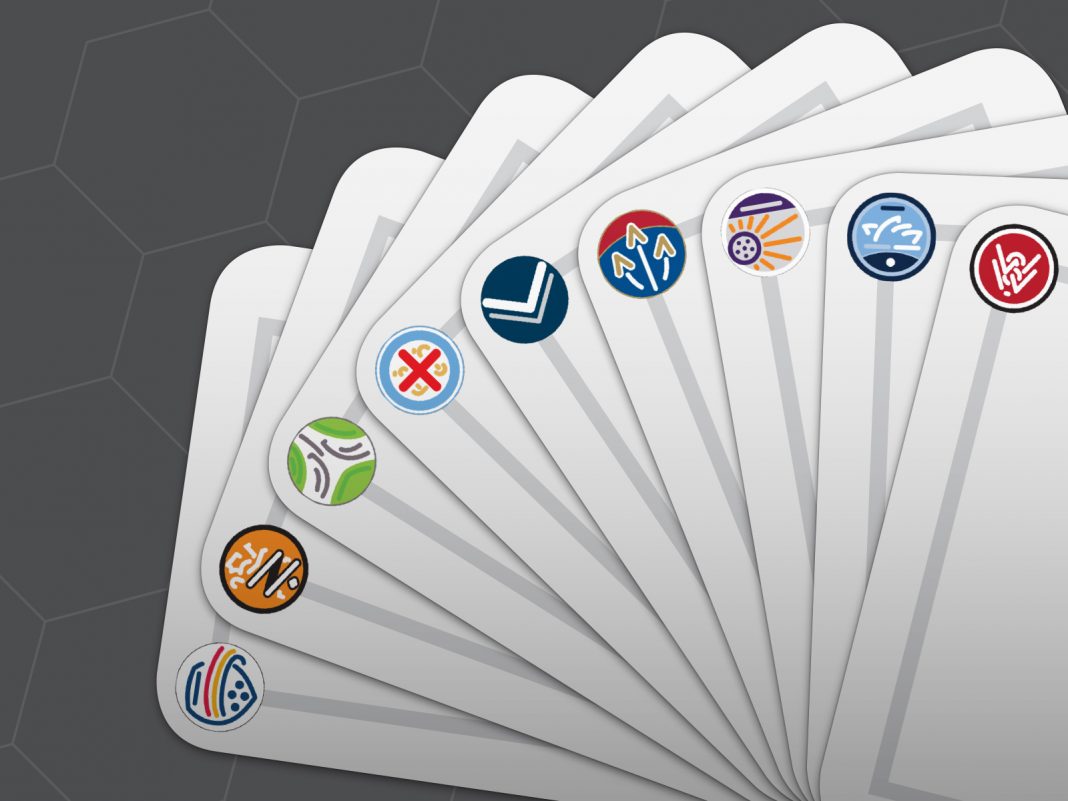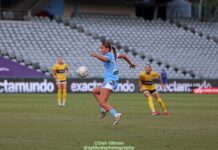
After keeping fans across the country on tenterhooks for months, the newly-independent W-League has finally released this season’s fixture. This season will again see teams play 12 matches across 14 rounds, with the competition kicking off on 14 November and culminating with the 2020 W-League grand final on the weekend of 21-22 March.
The major departure from previous seasons comes in the form of two major international breaks: the first being a break of two weeks between rounds 11 and 12, allowing Matildas players to compete in the upcoming AFC Olympic qualifiers; the second, a single weekend between the final round and the semi-finals, coinciding with a potential Olympic qualification play-off.
While these breaks rob up-and-coming players of potential opportunities deputising for their national representative team-mates – as was the case with NWSL clubs during the 2019 World Cup – the League has taken the position that maintaining the integrity of the competition should take precedence over unearthing any potential diamond in the rough among the W-League’s less-experienced talent.
Similarly, these international fixtures, as imperative as they are, have also forced the League’s hand in terms of failing to extend the season to a full home-and-away fixture, meaning that the competition will once again be unbalanced, somewhat putting pay to the integrity theory.
With these in mind, we pick our winners and losers from the 2020 W-League draw.
LOSERS
Melbourne Victory
There’s no kind way to put this: the single biggest loser in this season’s fixture is Melbourne Victory. The reigning W-League premiers have been blessed [read: cursed] with easily the most convoluted, complicated and complex draw of any team – and for more than one reason.
While Jeff Hopkins’ side will back themselves to maintain their form heading into this season, they’ve been dealt a tough road to achieve that. Starting with away trips to fellow 2018-19 semi-finalists Sydney and Brisbane, Melbourne will have to wait until round six before they’ll play a home game in the southern capital – potentially even longer if their currently-TBC home game against Brisbane is played in regional Victoria.
When they do eventually get their feet back on the ground at Tullamarine, the Vuck will play at up to five home venues across their six home matches – at Latrobe Stadium in Morwell, Lakeside Stadium, Swan Street, Docklands, and the to-be-determined home match. Add to that gruelling trips to Brisbane, Adelaide, and Perth, and you’re left with one of the most scattergun seasons of any team in W-League history.
We send our thoughts and prayers to the club’s kit staff.
Young and emerging players
As great as maintaining the integrity of the competition by observing the FIFA-mandated international windows across the season is, it’s a real shame that fans won’t be able to enjoy the absolute chaos of Matildas-less W-League football for three weeks of the year. As well as allowing fringe players to see valuable minutes, the potential to see them playing them against foreign internationals for the first time in their careers, matches without first-string Matildas players would give youth internationals the opportunity to step into more prominent roles and show their wares on the big stage.
Imagine players like Nia Stamatopoulos or Claudia Mihocic bursting onto the scene in the place of their more-experienced team-mates, or Princess Ibini finding her niche leading the line in the place of Matildas-bound Caitlin Foord. While these players would usually get their chance through injury or illness, a full round of football for fringe players to truly stamp their authority on teams could have proven a huge leap forward in their young careers.
WINNERS
Melbourne City
If there was one team that missed last season’s finals which needed any form of competitive advantage, surely it wasn’t the perennially-successful Melbourne City.
Fresh from missing their first finals series in the club’s four-year W-League history, Melbourne City have been lucky enough to be blessed with easily the kindest draw of any club in the competition. As well as playing the majority of their home matches in Melbourne’s northern suburbs, their away fixtures will see them avoid travelling to either Adelaide or Perth, while their furthest away trip – to Brisbane in round eight – is scheduled for the week after their first bye, meaning players will be fresh from the week off.
This combination of a lack of travel and a familiarity of home grounds gives City a huge advantage heading into the season, even before you consider their on-field signings and league-leading club facilities.
Adelaide, Canberra and Perth
While not being able to share double-headers with an A-League team – whether that be due to time differences, or not having an A-League team to call your own – can seem like a drag, it does have its benefits.
Adelaide, Canberra, and Perth will all play their respective home matches at one stadium – Marden Sports Complex, Dorrien Gardens, and McKellar Park – allowing players to grow familiar with the quirks of their ground, fans to claim their spot at every match across the season, and giving the football community in each city a home to call their own.
These smaller grounds also mean clubs can be more niche in their matchday experience, from something as simple as giving members numbered seating at home games to offering local food and beer inside the stadium, further adding to fans’ feeling of ownership of their home ground from season to season.
W-League fans
As much as the majority of W-League fans – this writer included – would have loved to have seen a full home-and-away fixture, it’s tough to argue that this W-League season isn’t easier to watch than ever before.
With the two Melbourne teams taking games to Morwell and Shepparton, Sydney playing a home game in Wollongong, and Brisbane playing all their home matches at boutique venues in Redcliffe and Richlands, fans outside clubs’ usual catchment areas will be able to see their teams play live, while anyone who can’t get to games in person will now be able to stream every match live on Fox Sports’ online platform Kayo.
This season will also see 10 W-League / A-League double-headers, as well as 32 matches broadcast live on Fox Sports or ABC TV, meaning casual fans and those without access to online platforms will also be able to tune in or attend matches.
While there’s still barriers to fans getting to games – differing kick-off times, weeknight matches, lack of public transport options to venues – the football community has more chance than ever before to watch or attend W-League matches. With a brave new dawn fast breaking over both the men’s and women’s competitions in Australia, hopefully this increased opportunity pushes the competition even further forward, both on and off the field.






